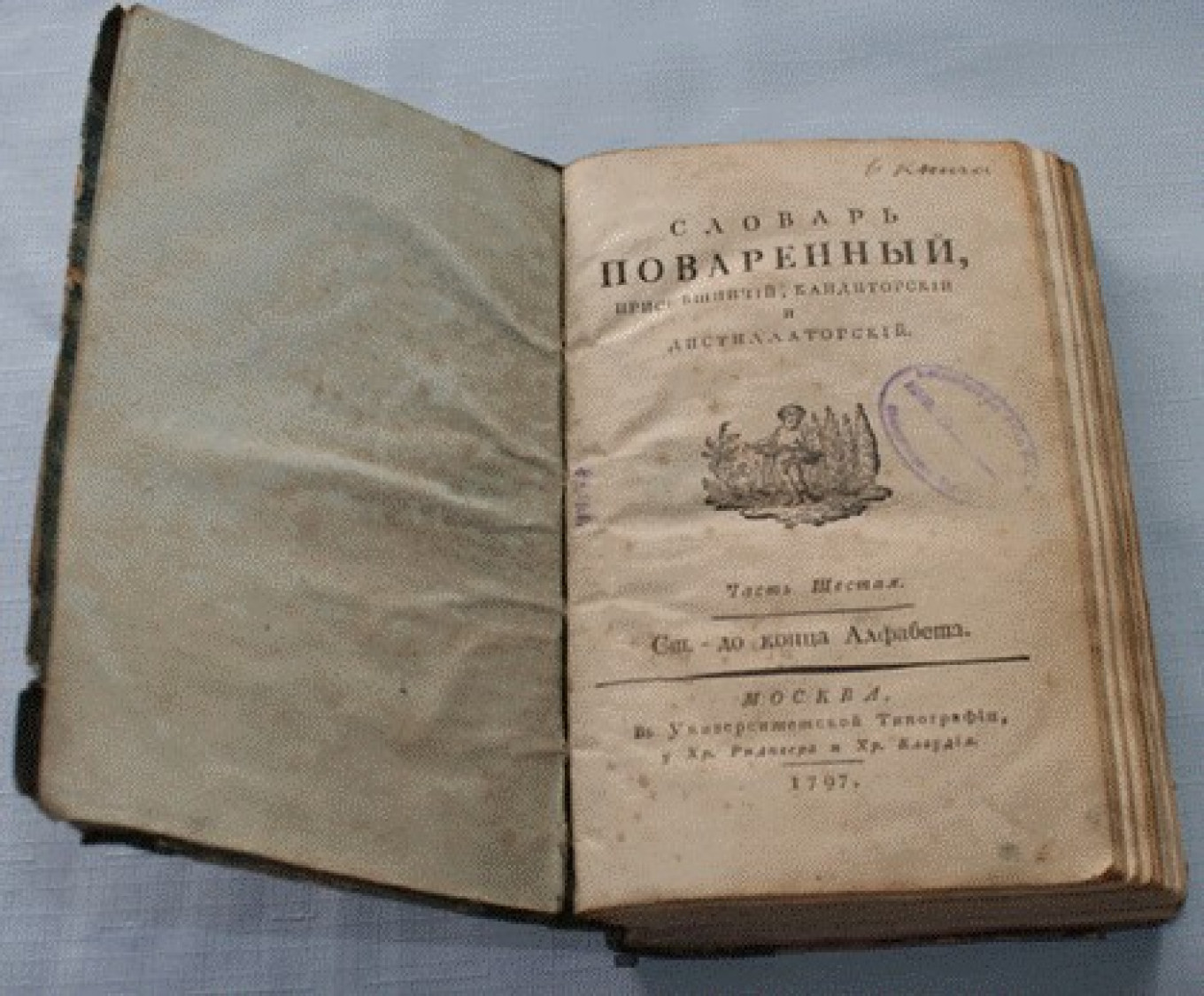What is Russia’s most famous dessert? Most people would answer without a moment’s hesitation: medovik (honey cake). It brings us back to our childhood — it’s comforting and homey. Why do we love it so much? What is the secret to its appeal? Of course, it’s the main ingredient that gives it flavor and aroma — honey. We also love it because it’s the taste of gingerbread, which has been passed down over the centuries and become part of our genetic make-up.
Our mothers and grandmothers called it "red cake,” “little bee” and "honey fluff," but whatever they called, it’s medovik. The recipe for medovik is usually passed down from generation to generation. It can be made in endless variations: nutty, caramel, and chocolate. It’s a blank slate for experimentation.
Chefs in Moscow restaurants also like to add something of their own to the recipe. Before the war began in February, they even organized entire medovik festivals. Some added banana puree to the batter, others prunes. Chefs put truffles in the frosting, or decorated it with meringue and honeycomb, and even with gold leaf. There were all sorts of exotic versions, such as liver medovik: chicken liver pâté between cake layers with fig jam on top. Where are all these rich versions now?
In short, medovik is marvelous. The only question is about its origins. One version on internet is that Russia owes a debt of gratitude to the wife of Alexander I, Elizaveta Alexeyevna, for medovik. The tale has been around for a long time, and the exact same story is told about the Austrian Imperial cake, the Ukrainian Kyiv cake, and so on. In all of them a new chef didn't hear or understand something, but the result is a culinary masterpiece for the ages. In the case of medovik, the tsarina supposedly became the victim of a new chef who didn’t know that she hated honey. But after a bite, her anger turned to delight as she fell in love with this new “Russian” flavor (which she didn’t know since she was a Baden princess before her marriage).

Naturally, this story is not confirmed in any historical sources or memoirs and is, in general, highly improbable. To begin with, the idea that there would be a kitchen hand or new cook not familiar with the tastes of the family at the table of Alexander I is pure fantasy. Even Marie-Antoine Carême, specially invited from France in 1819, was never allowed to cook for the tsar although he’d worked in the palace kitchen for several months. Alexander I generally did not like new faces in his inner circle. In addition, a skilled and experienced physician, Jacob Villier (later the president of the Medical-Surgical Academy), exercised strict control over the food of the royal family.
But there are even more obvious reasons why the story about "Elizabeth's favorite honey cake” is clearly false. Until the mid-19th century, the only dough made with honey was for prianiki (gingerbread). No cook could imagine making a cake out of gingerbread.

We can’t find any special honey cakes in any cookbook of the early 19th century. We checked "The Cooking, Serving, Confection Making and Distilling Dictionary" (1795-1797) by Vasily Levshin; I. Navrotsky’s the "New Complete Cookbook" (1808), "The General Complete and Expert Confectioner" (1811) — nowhere are honey cakes mentioned. The fashion for them would not come to Russia until almost a century later.

Medovik is not at all native to our cuisine, but it’s a talented adaptation of a foreign cake that appealed to Russians’ taste for honey. It was made frequently in the 20th century. But its heyday was during the Soviet period, when it became everyone’s favorite homemade treat.
This is important: it was a homemade cake. It was not served in any cafeteria or restaurants in the Soviet Union. It was not included in official collections of recipes for catering, or even in the "Book of Tasty and Healthy Food.” It might surprise you that the first recipe for medovik in Soviet cookbooks was only in 1960 in the book "Ukrainian Dishes" published in Ukrainian in Kyiv. And a little later, the famous specialist in Ukrainian cuisine Darya Tsvek would publish dozens of variations of this homemade dessert.

Today you can find medovik in the best restaurants. But it's still most delicious when your mother or grandmother makes it and you eat it at their table.
Here is our family recipe that we have been making since Soviet times. The dough is simple, the ingredients are at hand, the main ingredient is honey, but not too much of it. It is prepared the day before baking. But then the cake still has to infuse and soak up the frosting.
Medovik
Before you begin, here are a few general tips:
You can use any honey — either thin or very thick. Both melt when heated.
Heat the ingredients until the sugar has completely dissolved
Do not "activate" the baking soda in a spoonful of acidic liquid. It will begin to work when the ingredients are heated. Honey is an acidic medium for soda.
Ingredients
- 100 g (3.5 oz, or about 5 Tbsp) honey
- 100 g (3.5 oz, or ½ cup) sugar
- 100 g (3.5 oz, just over 7 Tbsp) butter
- 1.5 tsp baking soda
- 2 eggs
- 500 grams (1.1 lb. or 3 cups) flour
- 1 can (400 grams/14 oz.) cooked sweetened condensed milk — dulce de leche (to make it yourself, see below*)
- 300g (10.6 oz, 2 sticks and 6 Tbsp) butter at room temperature
Preparation:
- Put sugar, honey and chunks of butter in a heavy-bottomed saucepan.
- Over low-medium heat, stirring constantly, melt the ingredients and add the baking soda.
- Stirring constantly, cook until lightly caramelized.
- Remove from heat and cool.
- Beat the eggs and sugar with a whisk and add to the honey mixture. Stir to combine.
- Gradually add the flour, then turn out and knead the dough to mix thoroughly.
- Divide into 8-9 pieces, form into balls, place on a plate, cover with cling film and place in the refrigerator overnight. Just like gingerbread, honey dough needs to ripen!
- The next day preheat the oven to 180˚C (350˚ F).
- Roll out each piece of dough on baking paper, place a plate or bowl on the dough and trim the edges evenly around the circumference. Remove the plate or bowl but leave the scraps and let them bake with the cakes. They will be needed later.
- Transfer the baking paper to a sheet pan (baking tray).
- Bake quickly, until lightly golden, 3 to 4 minutes.
- Cool the cakes.
- Mix the boiled sweetened condensed milk and butter. Do not whisk.
- Lightly frost the first layer, then add layers and frost each one, finishing with frosting on top and the sides.
- Crush the baked cake scraps and sprinkle over the top and sides of the cake.
Let the cake soak up the flavors for about 12 hours. Better yet, make it the night before. Medovik takes time. But then what a magical aroma of honey and sweet, caramel milk!

* Cooked sweetened condensed milk - dulce de leche.
You can buy dulce de leche, but it is easy to make.
- Peel the label of a can of sweetened condensed milk, put it in a pot with a cover, fill the pot with cold water, making sure that the can is covered by at least 2 inches of water. Put the lid on the pot and bring the water to a gentle boil. Reduce the heat so that the water gently simmers.
- Check the water level frequently and if necessary, add boiling water so that the can is always submerged.
- For this recipe, simmer the can for 2 ½ hours.
- When the time is up, turn off the heat but leave the can in the pot. Let it cool down to room temperature (and never try to open the can while hot).
- When completely cool, open the can. Store any unused cream in a clean glass jar in the refrigerator.
Note: you can boil several cans at once in one pot, but make sure that they do not touch and that there is ample space around each can.
A Message from The Moscow Times:
Dear readers,
We are facing unprecedented challenges. Russia's Prosecutor General's Office has designated The Moscow Times as an "undesirable" organization, criminalizing our work and putting our staff at risk of prosecution. This follows our earlier unjust labeling as a "foreign agent."
These actions are direct attempts to silence independent journalism in Russia. The authorities claim our work "discredits the decisions of the Russian leadership." We see things differently: we strive to provide accurate, unbiased reporting on Russia.
We, the journalists of The Moscow Times, refuse to be silenced. But to continue our work, we need your help.
Your support, no matter how small, makes a world of difference. If you can, please support us monthly starting from just $2. It's quick to set up, and every contribution makes a significant impact.
By supporting The Moscow Times, you're defending open, independent journalism in the face of repression. Thank you for standing with us.
Remind me later.







